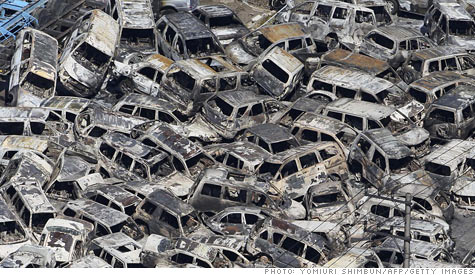What is the purpose of this blog?
The purpose of this blog is to become a better writer by communicating science effectively. I would also like to inform readers about what type of geological hazards are going on in the world today.
Who is the imagined audience(s) of this blog?
The imagined audience is those not in the science field.
Have my posts matched up with my purpose/audience? What/Who might I be overlooking in defining my purpose/audience this way?
I think that I still have improvment to be made with this. I want readers to be able to understand what I am trying to get across and still find it interesting. I may be overlooking those who are in my same field, and would like updates on news that is going on in our field.
What can I do to encourage more reader participation with my blog?
I think changing the tone so that it is not always scientific would encourage readers to participate.
How can I expand my audience in this class? Outside of this class?
Posting on a wide range of subtopics would get more peoples interest both inside this class and outside.
How would I characterize the tone of my blog?
I would charcterize the tone of my blog right now as serious and scientific. I hope to change this and be able to lighten the tone up as part of my posts.
What do I hope to get out of writing this blog?
From this blog I hope to be able to engage readers and keep them interested in my topic. Science communication is difficult to grasp and I hope that I can get better at this by keeping to write.
What would I like others to get out of it?
I would like others to gain some knowledge of geological hazards so that they can be more informed when these events happen.
What are the strengths of my blog/my blogging?
I think that a strength of my blog is that they are easy to read.
What are the weaknesses?
One of my weaknesses in my blogging is that I need to provide more information with my posts. Readers are left with questions after reading them. I hope that I can improve on this weakness. Another weakness is that there could be more pictures and links for readers to click on to get more detailed information.
Have I used a deficit model in my writing, or something else? How would I know?
I think that there is some deficit modeling in my posts and then not in others. One way to know, is the comments that people have left about my posts.
How have I characterized (implicitly or explicitly) science, engineering, and/or technology in my blog?
I have characterized science and engineering as mostly explicitly in my blog.
How have I characterized myself?
I characterize myself as someone who wants to learn new information in my field and wants to share it with others.
Self Evaluation
I think that I have been posting a good amount of posts. I have tried to post at least two a week. My posts have been on events or news that have been happening recently in the world of geology and geologic hazards. I have stayed focus on my topic of geological hazards as well as trying not to use jargon so that a wider audience can gain from my blog. I have also been reading the comments that other people have left on my posts, and I feel I have done a good job responding to them, taking the advice and answering questions that they have. I have also tried to post pictures so that the posts are not boring and links so that more information can be found easily.

























